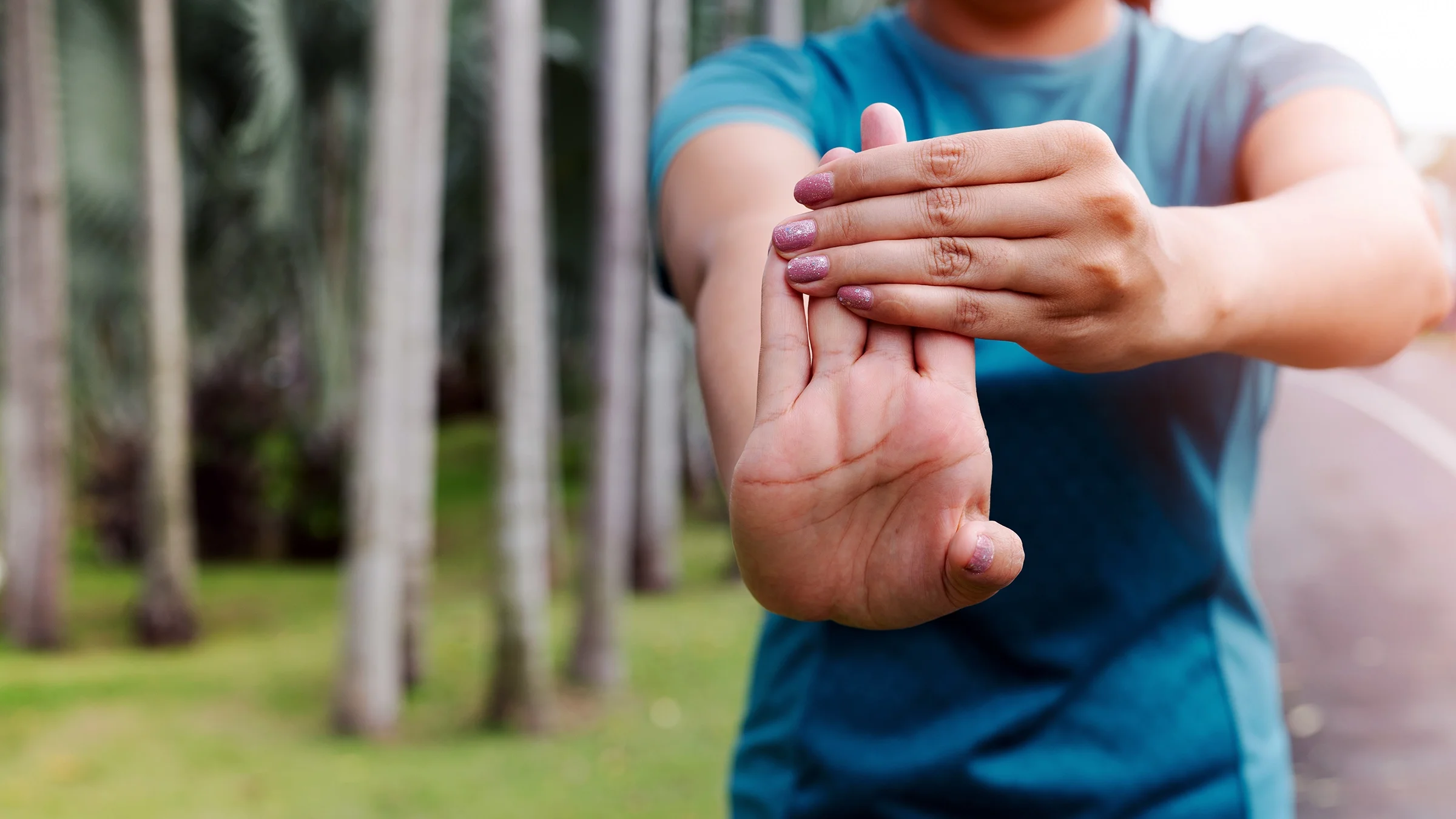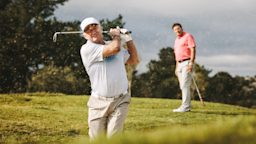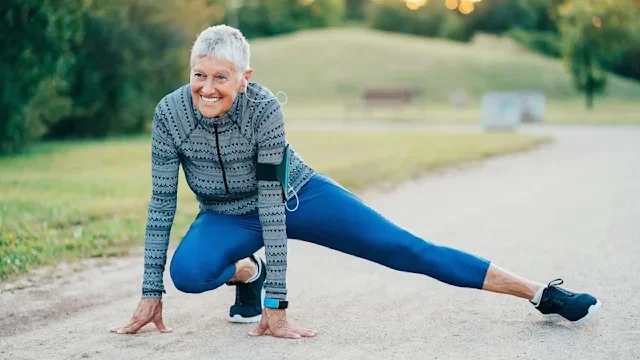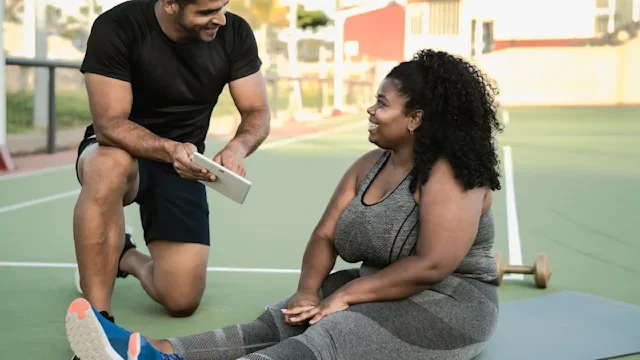Key takeaways:
Golfer's elbow causes pain and stiffness on the inside of your elbow and a weak grip.
Playing sports like golf, football, or tennis may cause this overuse injury. Work activities –– like hammering or painting –– that require repetitive hand or wrist movements can also lead to golfer's elbow.
Your healthcare provider may recommend golfer's elbow exercises to stretch and strengthen your forearm muscles. Treatment might also include ice or a short round of nonsteroidal anti-inflammatory drugs (NSAIDs) to ease pain and inflammation.
Golfer's elbow, or medial epicondylitis, is a painful but common elbow injury. It occurs when overuse causes damage and inflammation in the tendon on the inside of the elbow (medial common flexor tendon). Symptoms like pain on the inside of your elbow and forearm or grip weakness make it difficult to complete activities.
And golfers aren't the only ones at risk. It can also affect tennis players, pitchers, bowlers, and other athletes. But most cases aren't sports related. People with jobs that involve heavy lifting or forceful, repetitive movements –– like gripping or flexing the wrist –– are more likely to develop golfer's elbow. Examples include plumbers, carpenters, and construction workers.
Golfer's elbow doesn't have to put a stop to your golf game or daily routine, however. Treatment may include golfer's elbow exercises to strengthen your tendon and surrounding muscles.
Search and compare options
What are the best golfer's elbow exercises and stretches to relieve pain?
Golfer's elbow exercises should target muscles in your forearm, shoulder, and upper back. Stretching and strengthening these areas may relieve pain, increase flexibility, and restore range of motion.
But for the first few days, experts recommend resting your arm. So try to avoid any activities that make your pain worse. Then, you can ease into golfer's elbow exercises with your healthcare provider's OK. You can slowly add more exercises as your elbow heals. Just remember to keep the moves pain free.
1. Golfer's elbow stretch
This wrist flexor stretch with elbow extension targets the muscles attached to the medial common flexor tendon on the inner side of your elbow. These muscles move your forearm and flex your wrist and fingers.
Step 1: Sit or stand upright and with your shoulders back.
Step 2: Extend the affected arm straight before you, with your palm facing out and your fingertips toward the ceiling.
Step 3: Use your other hand to pull your extended hand back towards your body.
Step 4: Hold for 30 to 45 seconds.
Step 5: Repeat 3 to 5 times.
2. Wrist flexion
This wrist flexion exercise requires a dumbbell. It aims to strengthen your wrist with two types of muscle contraction. During an eccentric contraction, your muscle lengthens while it contracts. With a concentric contraction, your muscle shortens as it contracts. Experts say that eccentric wrist flexor movement is an important part of recovering from golfer's elbow.
Step 1: Place your forearm on a table with your palm facing up.
Step 2: Put the crease of your wrist on the edge of the table so your hand hangs off and your forearm remains supported.
Step 3: Hold a dumbbell in your hand and slowly lower it as you bend your wrist down towards the floor. Hold this position for a moment. This move works the muscle eccentrically. Make sure it is a slow and controlled motion.
Step 4: Raise the dumbbell back up to the starting position. This move works the muscle concentrically.
Step 5: Do 2 sets of 15 reps.
3. Forearm supination and pronation
Forearm supination and pronation is a strengthening exercise that also requires a small dumbbell. It works the muscles that pronate (turn your palm down) and supinate (turn your palm up) your forearm.
Step 1: Bend your elbow at a 90-degree angle and rest your forearm on a table with your hand hanging over the edge.
Step 2: Hold a 2- to 3-pound dumbbell with your palm facing inward and your grip firm.
Step 3: Keep your arm on the table as you slowly turn your wrist so your palm faces up. Pause for a moment before returning to the starting position.
Step 4: Slowly turn your wrist so that your palm faces down. That's one repetition.
Step 5: Do 2 sets of 10 reps.
Read more like this
Explore these related articles, suggested for readers like you.
4. Open book stretch
Golf requires mobility in your shoulders and rotation in your mid- to upper spine. Being stiff or having reduced flexibility can affect your swing, making you overwork your elbow. The open book stretch may increase shoulder, chest, and spinal flexibility. This can improve your swing and take stress off of your elbow.
Step 1: Lie on one side with your hips and knees stacked. Bend your knees to form a 90-degree angle.
Step 2: Extend your arms in front of you at shoulder level with your palms touching.
Step 3: Keep your top arm straight as you slowly move it back and rotate your trunk in the same direction.
Step 4: Continue rotating as far back as you can, keeping your hips in the same position so the rotation comes from your upper back. You will feel a stretch along your shoulders and spine. Stop if you feel any pain.
Step 5: Hold for 10 to 15 seconds.
Step 6: Repeat the stretch 5 to 7 times on each side.
5. Wall angel
Strengthening the shoulder girdle and the muscles that support the shoulder blade (scapula) may help treat or prevent golfer's elbow. The wall angel can help you do just that. Strong shoulders help you maintain proper form while swinging or throwing.
Step 1: Stand with your back against a wall and your feet a few inches in front of it.
Step 2: Bend your elbows out to the sides at shoulder level. Place the back of your forearms flat against the wall or as close to it as you can without pain.
Step 3: Slide your elbows up until your fingers touch overhead or as high as you can comfortably go. Focus on keeping your forearms against the wall throughout the movement if you can.
Step 4: Lower your arms to return to the starting position.
Step 5: Do 2 sets of 15 reps.
6. Tennis ball squeeze
Squeezing a tennis ball or a small rubber ball is a simple and effective way to work your wrist and finger flexors and strengthen your forearm muscles.
Step 1: Hold a tennis ball in your hand with your palm face up.
Step 2: Use your fingers to squeeze the ball. Hold for 5 to 10 seconds before releasing your grip.
Step 3: Continue grasping and relaxing for 3 minutes, working your way up to 5 minutes.
How long does it take to recover from golfer's elbow?
Symptoms of golfer's elbow may improve without special treatment after a few months, though it can take longer. Experts say that 80% of people are pain free after 1 year.
Doing golfer's elbow exercises can speed up your recovery and prevent a recurrence. In addition to physical therapy or at-home exercises, the following golfer's elbow treatments may improve your symptoms, though more research is needed:
Resting from aggravating movements and gradually returning to activity
Applying ice or cold therapy to reduce swelling
Taking a short round of nonsteroidal anti-inflammatory drugs (NSAIDs) to relieve pain and inflammation
Wearing a forearm band or elbow brace to reduce strain on your muscles and ease pain
Practicing proper posture and form for your sport or activity can also help prevent golfer's elbow. For golfers, that might mean getting a club fitting and taking lessons to improve your swing and reduce stress on your forearm.
If your pain worsens or doesn't improve after a couple of weeks, check in with your healthcare provider for an evaluation. They can rule out other issues, like a pinched nerve in your neck or cubital tunnel syndrome. And they might recommend other treatments, like steroid injections or surgery.
The bottom line
Golfer's elbow is an overuse injury that causes pain on the inside of the elbow. Anyone who puts repetitive stress on their inner elbow –– from golfers and pitchers to carpenters and plumbers –– can get golfer's elbow.
Fortunately, symptoms may improve after several months. Golfer's elbow exercises, including targeted stretches and strengthening moves, can help you recover faster. Working on proper form for your sport or activity can also prevent a recurrence of golfer's elbow.

Why trust our experts?



References
Amin, N. H., et al. (2015). Medial epicondylitis: Evaluation and management. Journal of the American Academy of Orthopaedic Surgeons.
AskDrJo. (2016). Wrist flexor stretches with elbow extension - ask doctor Jo [video]. YouTube.
Kiel, J., et al. (2022). Golfer’s elbow. StatPearls.
National Institute on Aging. (2012). Hand grip strength exercise for older adults [video]. YouTube.
National Health Service Ayrshire and Arran. (2019). Elbow forearm supination pronation [video]. YouTube.
InformedHealth.org. (2021). Golfer’s elbow: Overview. National Library of Medicine, National Center for Biotechnology Information.
InformedHealth.org. (2021). Golfer’s elbow: Strengthening and stretching exercises. National Library of Medicine, National Center for Biotechnology Information.
InformedHealth.org. (2021). The treatment options for tennis elbow and golfer’s elbow. National Library of Medicine, National Center for Biotechnology Information.
Padulo, J., et al. (2013). Concentric and eccentric: Muscle contraction or exercise? Sports Health.
Rehab My Patient. (2021). Wall angel [video]. YouTube.
ScienceDirect. (n.d.). Concentric muscle contraction.
ScienceDirect. (n.d.). Eccentric muscle contraction.
Strong Gym Toronto. (2022). Eccentric flexor wrist curls - golfer's elbow rehab [video]. YouTube.
Terlezky, S., et al. (2022). [Medial epicondylitis (golfer’s elbow) - clinical presentation and treatment]. Harefuah.
The San Antonio Orthopaedic Group Orthopaedics and Spine. (2020). Open book stretch - physical therapy exercises [video]. YouTube.
Witstein, J. R., et al. (2022). Golf injury prevention. OrthoInfo.
Zahn, K. V., et al. (2023). Medial epicondyle injection. StatPearls.

















